If you’re reading this on your smartphone or laptop, chances are that you’re using Google Chrome as your default web browser. Be it desktops, mobile phones or tablets, Google’s web browser has always taken the lead in terms of usage and it’s all backed by the right set of features – flexibility, variety of extensions, speed and Google’s addictive ecosystem.
But if you feel Google is getting too involved with the way you do things, there’s a nee web browser that checks all the boxes that Chrome does and then some more. Brave Browser, developed by Brave Software, is the latest in line that has been designed to reduce your footprint on the internet, offering a set of tools that protects you from being continuously tracked.
What is Brave?
Brave is a privacy-focused browser that provides its users with a different approach to how they browse the internet. The browser has been designed to strip a website from its ads which not only makes it secure but fast as well.
Brave is integrated with a system that natively blocks cross-site trackers and advertisements and even with all those features, using Brave feels a lot like using Google Chrome. This is because Brave, like its Google counterpart, is also built on the Chromium engine and thus supports all the extensions and flags as Chrome browser. What’s more? There is cross-platform support, synchronizing between devices and better privacy.
Related → List of Android browsers with high refresh rate of 90Hz and 120Hz
Where can I use Brave
Brave Browser can be used across all major platforms, similar to that of Google Chrome. The web browser can be downloaded and installed on smartphones running on Android or iOS as well as on PCs running on Windows, macOS, and Linux. You can download Brave Browser for your device by clicking here.
Related → How to send a number to phone easily from Chrome browser
Why I escaped from Google Chrome
Before we move on to why Brave is better, let’s discuss what forced me to switch away from Google’s popular web browser.
- Getting more and more uncomfortable with Google knowing more about me.
- Distracting notifications since Google keeps learning my daily activities and notifies me about places nearby and things to do.
- Being an Android user, I don’t want Google to know my browsing habits on top of my location (because Google continuously pings the location of my device even when even the location history is switched off), usage of apps (Digital Wellbeing and other services allow Google to know which app I opened at a certain time) and the kind of content I consumed (through YouTube).
- If I’m the kind of person who wouldn’t want anyone else to know about what I do and where I was, why would I trust a single big organization with that kind of data?
Why change sides now
Google’s consumption of data didn’t start yesterday. So what changed?
- Chromium is expanding: While there have been many an alternative for Google Chrome, users couldn’t switch sides since they were already used to the goodies that Google’s Chromium-based browser provided. However, the open-source engine is now being used by other companies and one such example of the same is Brave.
- Chrome extension support: The recent Chromium-based alternatives to Chrome are also offering support for Chrome extensions. For many, the lack of extensions has been a reason for not switching away from Chrome. Both Brave and Vivaldi, which are based on Chromium now support chrome extensions without any issues.
- Comparable performance to that of Chrome: Besides extensions, the new alternatives are getting similar performance points as that of Chrome. While we’ve seen many browsers with different sets of customizations, it was Chrome that outgunned every single one of them based on loading speed and performance when multitasking. The new Chromium browsers offer performance that is on par with that of Chrome with one (Brave) even being faster than Google’s product.
- Support for offline Google’s services: Google reserves some special permissions to its services for users of Chrome. Like, the Google Docs offline extension which lets you type up a document without connecting to the internet, right from within your browser. While Google says it’s only for the Chrome browser, Chromium-based Brave can run it with no issues whatsoever.
Related → Chrome for Android tips
How is Brave similar to Chrome
- Built on the same Chromium framework
- Support for Chrome extensions and themes
- Inbuilt password manager
- Simple and speedy
- Has cross-platform synchronization
Brave vs Chrome [What’s different about it]
- An ad-blocker that’s natively activated, instead of a third-party extension that’s available on Chrome.
- Cross-site tracking is disabled
- Ability to customize your security per website
- TOR-enabled privacy mode
- Support for different search engines
Why should you use Brave
If you were to switch sides, there are a lot of reasons why you might want to change to Brave Browser.
- Adopting Chromium – Your initial reaction when you use Brave will be that using Brave feels a lot like using Chrome. This is because developers at Brave have adopted Google’s open-source Chromium engine which makes it interface look and feel exactly like that of Chrome, from opening a page to editing one. Like Chrome, Brave is simple to use and will be easier if you’ve already used Chrome for a long time.
- Chrome extension support – Brave supports all kinds of extensions that are already being used on Chrome. The browser has access to all add-ons hosted by Google’s Chrome Web Store. Additionally, Brave will alert you when you’re installing a sketchy one.
- Integrated ad and tracker blocker – Perhaps the best USP of Brave will be the fact that it does not require any third-party extension to guarantee browsing security. The built-in ad and tracker blocker cuts off adverts that record your browsing history and at the same time, blocks tracking cookies, fingerprinting and invasive ads.
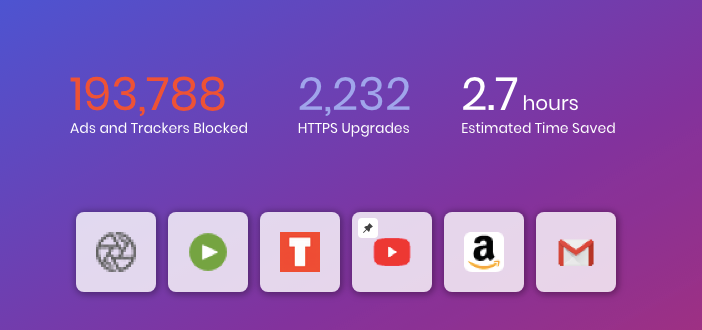
- Customized security settings – There’s a Brave icon on the address bar which lets you personalize security settings of different pages individually. You can choose to block fingerprinting attempts and scripts from loading and there’s also an option to lower shields. You can also choose what data to delete at the end of a browsing session.
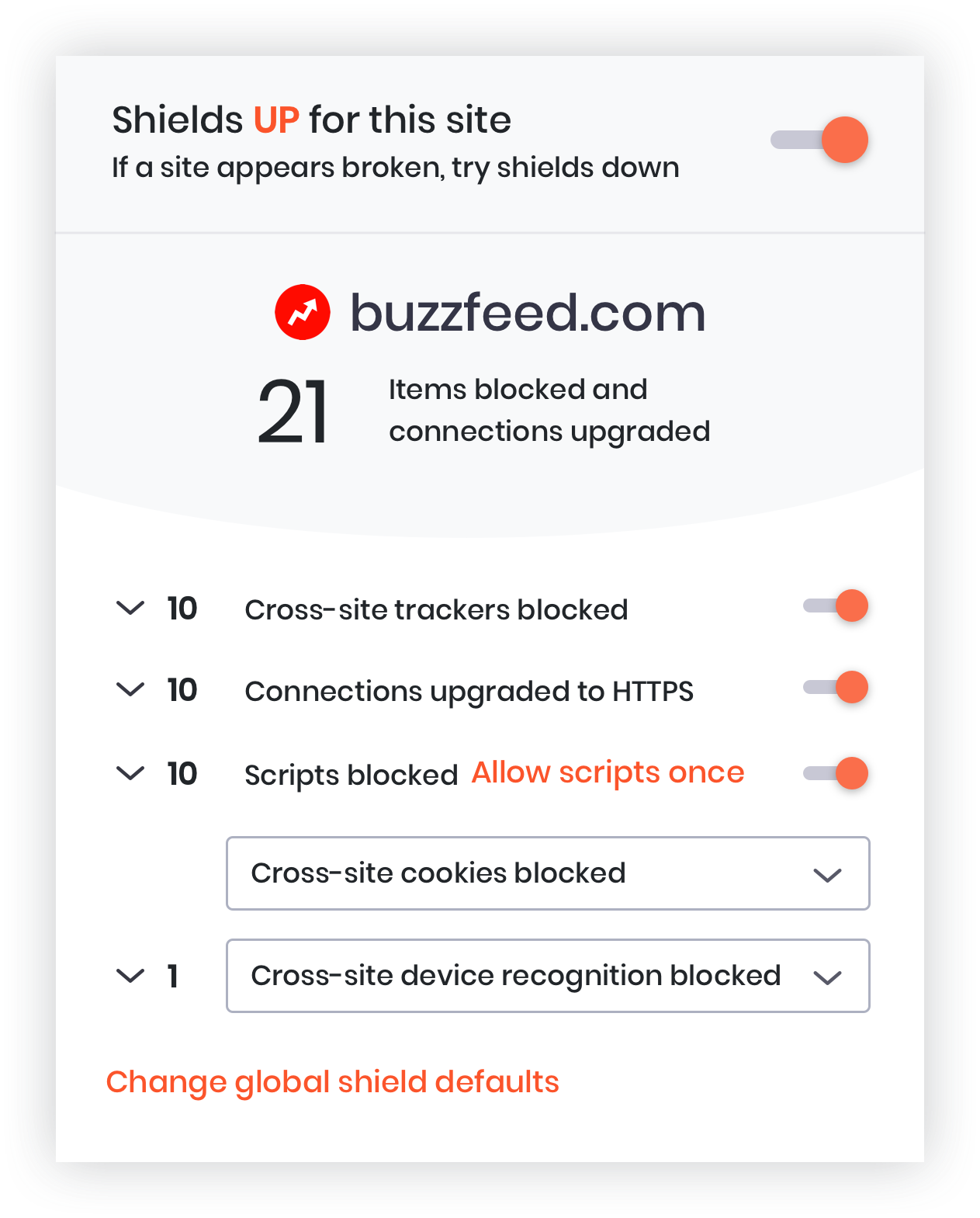
- Cross-platform synchronization – Brave can be accessed on devices running Android, iOS, Windows, Linux, and macOS. If you’re using multiple devices, Brave makes it easier to browse the internet as it synchronizes your activity between your different devices.
- Enabled with TOR – In addition to ad blocking, Brave provides integration with TOR for a more private browsing session. When inside the Private Window with Tor, the browser doesn’t directly connect to the website. Instead, it will connect you through a chain of three different computers in the volunteer-run Tor network. This means, neither your ISP or the government will be able to see which sites you visit because Brave doesn’t connect directly to the site.
- Blockchain-based BAT to contribute to creators – Brave has created a Basic Attention Token or BAT system which is given to both publishers and users when viewing ads. The system has been created to balance user privacy, prevent ad tracking and also support ad-based revenue that creators rely on. What this essentially means is that Brave replaces ads on a website with ads of its own. In an attention-driven system of online adverts, a move to make advertisers feel less comfortable certainly earns praise.

- Tip content creators across social media channels – In addition to websites, Brave users can also contribute to channels on Twitter, YouTube, and Twitch. Tips can be sent immediately and are visible in a creator’s account within minutes of payment. Speaking of payments, publishers are paid during the first week of each month.
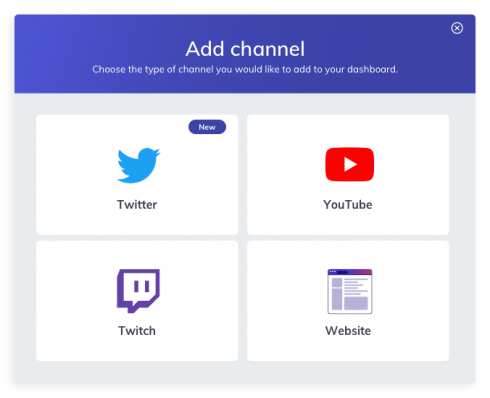
- Faster than Google Chrome – You might have seen several web browsers claim that they’re the fastest in the business but none have, until now, taken the title away from Google. Brave, however, has proven to be surprisingly fast and even zippier than Chrome itself. Not only does the interface load faster, but websites also boot up quicker as well and render details perfectly, without compromising the quality. We believe that Brave manages to do so because it blocks unnecessary elements from loading up like ads and cross-site trackers. Having personally installed Brave six months ago, the browser has saved me a total of 2.7 hours as is evident from the home screen and has blocked over 193k ads and trackers to make the internet experience faster.
- Pick your own search engine – Modern web browsers including Chrome and Microsoft Edge run on the same Chromium framework but unlike its counterparts, Brave lets you choose a default search engine of your choice from DuckDuckGo, Qwant, Bing, and StartPage. This will, in turn, boost your privacy since Google will no longer will be able to learn what you’re searching for which in most cases end up getting advertised back to you.
- Has a built-in password manager – Like on Chrome, Brave also features an in-house password manager. You can import your credentials from your existing Chrome browser, automatically save them and use it to autofill passwords when logging in to websites.
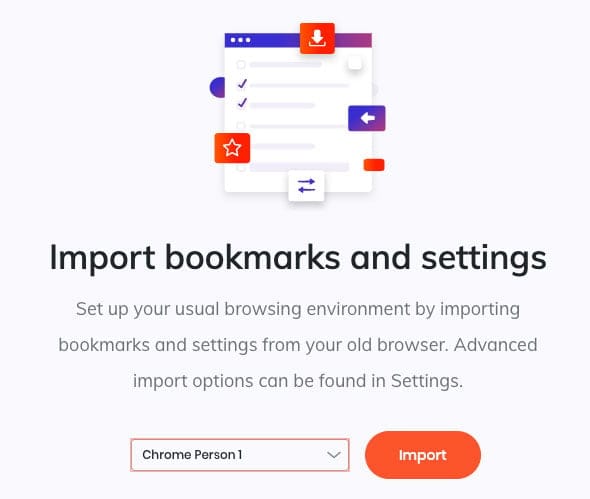
- Compatible with Chrome themes – Similar to supporting extensions from the Chrome Web Store, Brave is also compatible with themes available on the Chrome theme store. If you wish to add a sense of personal touch to your web browser, you can head over to Chrome Theme Store.
What you’ll hate about Brave
There aren’t a lot of things to not like about Brave. In fact, if your use of a web browser is purely for productive purposes, there’s no reason not to make the switch to Brave. But if we’re nitpicking, there will be a couple of things that might concern you.
- Native theming options are minimal – While we just talked about compatibility with Chrome Theme store, Brave’s own theme support is minimal. Users can choose between light, dark, and auto and cannot customize the default themes.
- Adblocking could hurt your revenue if you’re a publisher – While Brave is designed to provide the best browsing experience for an end-user, the same will affect you monetarily since it will be blocking most of the ads that are placed on your website. The presence of an ad-blocker will mean lesser people will see ads on your site, resulting in a drop in income if you’re in the online content business.
Are you trading anything off by installing Brave?
No. While it might only have 10 million downloads to the 5 billion of Google Chrome, there is no downside to switching to Brave. It offers a faster web browsing experience than Chrome by eliminating the need to load up unnecessary elements on the foreground like ads and trackers. By blocking ads, Brave loads up faster and renders everything without a miss and doesn’t consume as much RAM as Chrome which is known to duplicate some tasks in multiple tabs.
Brave is a safe bet and a well-deserved one for switching away from Chrome.
Other Alternatives: Vivaldi
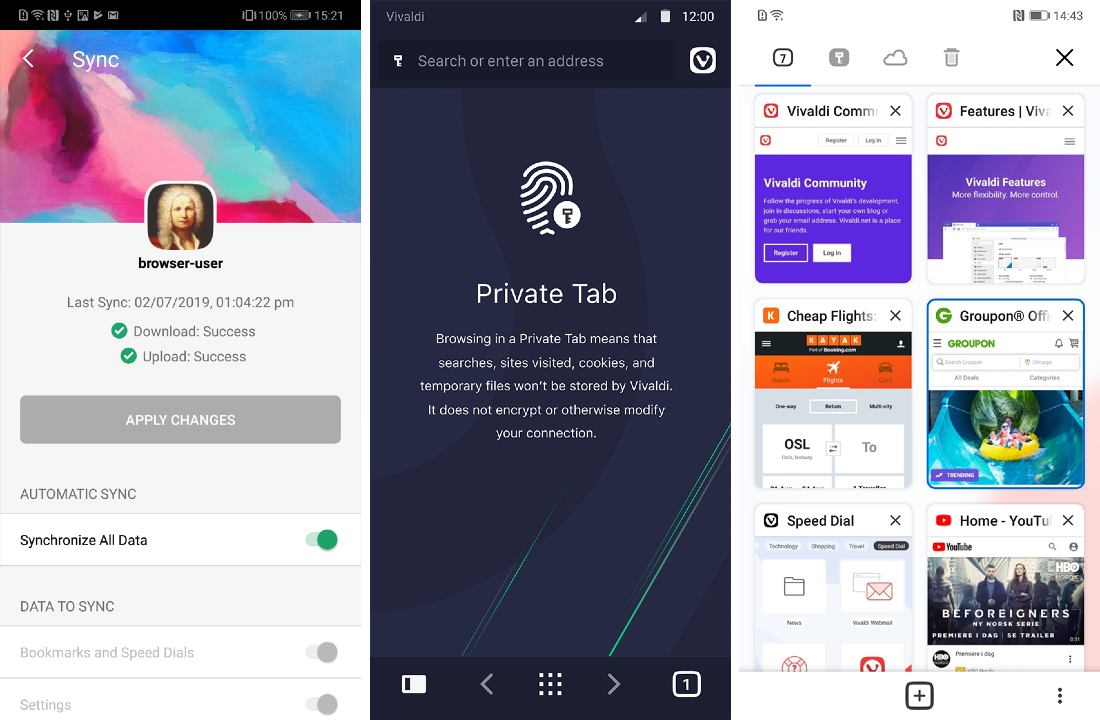
Another game-changer in the web-browser game has been Vivaldi, which is also based on the Chromium framework, offering more customizations than Brave Browser. In contrast to Brave, Vivaldi comes with reimagined tabs on the home screen, speed dial, and a sidebar for use as shortcuts to different websites, taking notes and capturing screenshots. Also in Vivaldi, users can choose to switch between tabs to appear on either side of the screen, instead of being at the traditional side which is at the top.
While Brave has managed to get 10 million installs on Android devices, Vivaldi’s Android app is still in beta with only over 100k downloads. The browser is, however, fully functional on Windows, macOS, and Linux. Another thing to note is that Vivaldi doesn’t natively block ads like Brave, although it offers support for Chrome extensions for the same. The browser has a ‘Do Not Track’ setting which requests website to not track you but oftentimes, sites can ignore them.
Bottom line
For the kind of features it offers and for how relatable it is to your regular Chrome browser, Brave is step up if you’re considering alternatives to the way you go around the internet. The browser is as secure as it is speedy, even toppling Chrome in its own game for daily use. While you might expect a little more from the overall look and feel of the browser, Brave has been designed barebones minimal to be simple and faster than your traditional browser.
With a new system of ad-blocking being implemented, Brave offers a completely fresh approach to the way you browse as you’ll start seeing lesser ads with even lesser trackers to chase you while you move from one site to the other. One thing is for sure, advertisers no longer hold the right cards and anything that makes them uncomfortable is a step in the right direction.
Do you use Brave Browser? How has your experience been since switching from Chrome? Let us know in the comments below.

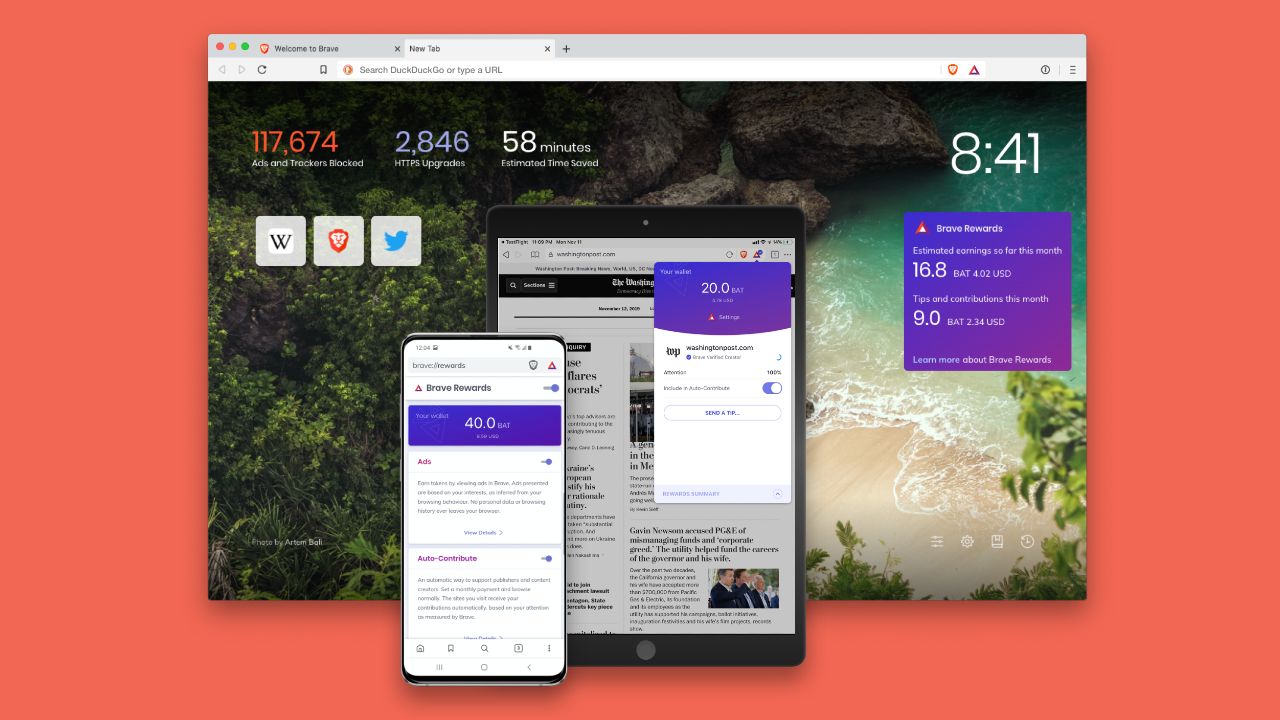











Discussion